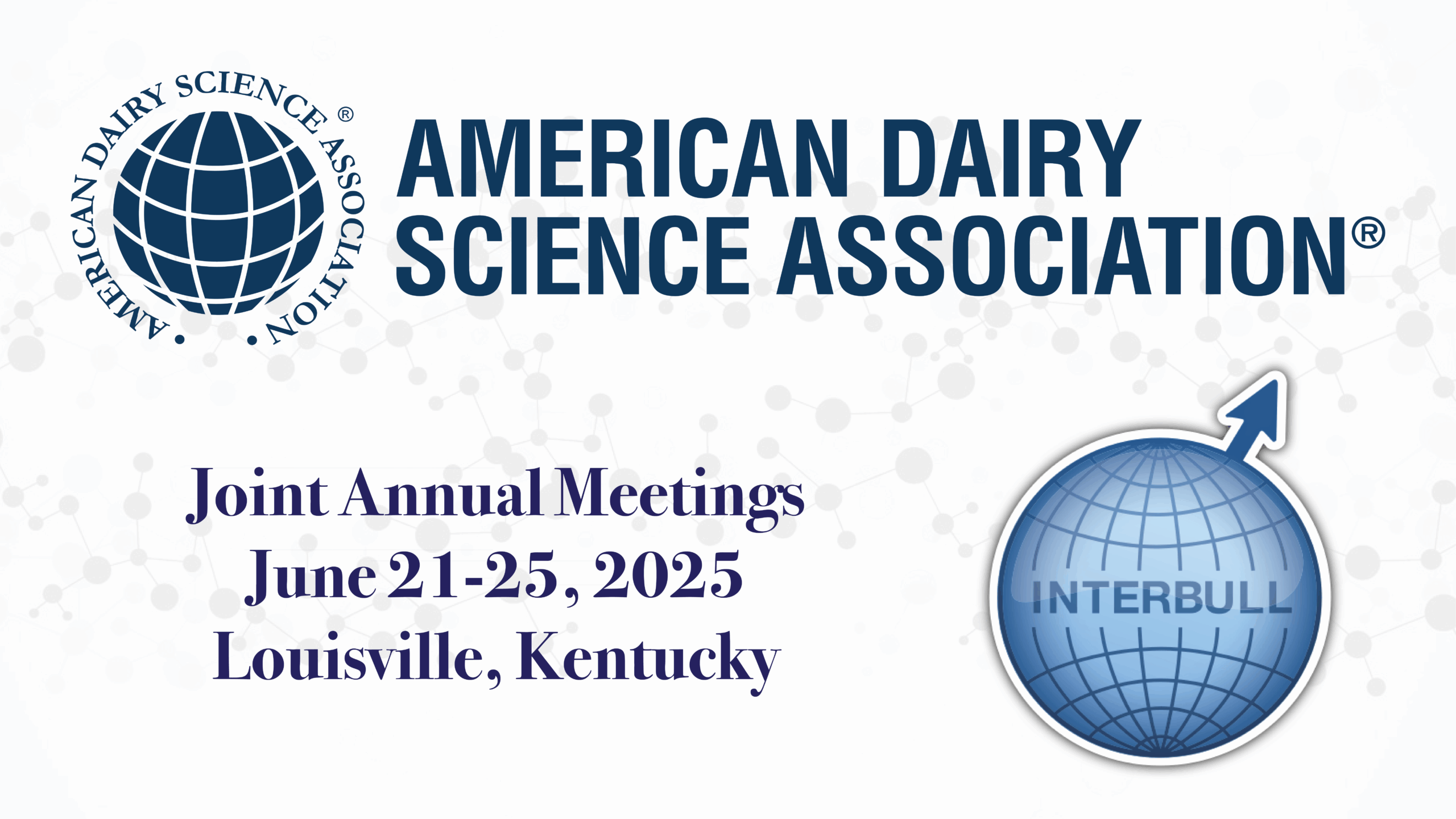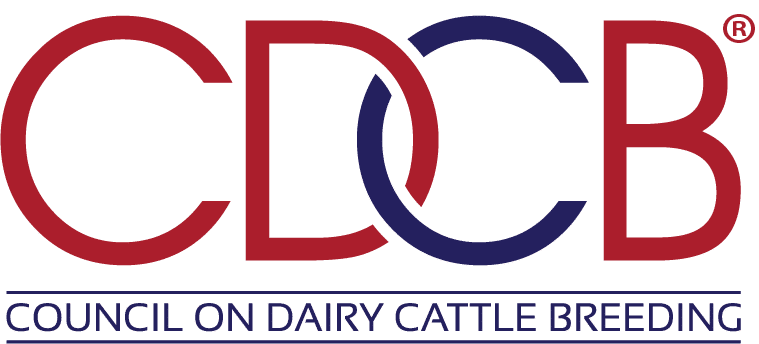Interbull, ADSA Meeting Showcases Latest Industry Highlights
Written by CDCB
July 09, 2025

CDCB staff shared their latest findings and participated in the combined Interbull Annual Meeting and American Dairy Science Association (ADSA) Annual Meeting, June 21-25, in Louisville, Kentucky.
From CDCB, 14 staff members attended, with several presenting and displaying posters.
- “Update on genetic parameters and introduction of new female fertility traits in the U.S. national evaluation” by Jason Graham, Consulting Geneticist
- “Lazy computation of residual polygenic effects” by Andres Legarra, Senior Geneticist
- “Reliability assessment of single-milking fat and protein percentages in dairy cattle” by Nick Wu, Senior Computational Biostatistician
- “Utilizing trimmer-recorded hoof lesions for a national hoof health genetic evaluation in the U.S.” by Kristin Parker Gaddis, Geneticist
- “Correcting traditional reliabilities for unequal use of bulls in the genomic era” by Andres Legarra, Senior Geneticist
- “Foundational review of U.S. female fertility trait evaluations” by Taylor McWhorter, Geneticist
- “Binning a continuous trait: Effects on information loss, variance change, genetic evaluations, and selection accuracy” by Nick Wu, Senior Computational Biostatistician
In addition, CDCB co-sponsored two symposiums: “Management of Genetic Diversity for Future-Proofing Dairy Cattle Breeding” and “Creating Carbon-Friendly Cows and Leveraging Omics to Improve the Sustainability of Dairy Production.”
Learn about the highlights of the events from the team:
“For my presentation, we proposed a new metric, I-ICC, which proved informative and practical for evaluating milk component data quality at the cow-day level. High-quality milk and milk component data are crucial for accurate genetic evaluations and effective routine herd management. However, potential errors can compromise the reliability of these data, leading to inconsistent conclusions and even incorrect decisions. The reality is that conventional outlier detection methods are not well-suited for identifying outliers of milk components. This situation motivates us to develop a novel metric for this purpose.” –Nick Wu, Senior Computational Biostatistician
“It was a great opportunity to meet face-to-face with many collaborators – especially international colleagues. The in-person interactions are always so much more valuable than emails! The meeting also featured a number of highly relevant topics and presentations, including discussions on new and novel traits, implementation details of single-step evaluations, and updates in areas like feed efficiency and methane emissions.” –Kristen Parker Gaddis, Geneticist
“The sessions that stood out the most to me were those focused on the implementation of the single-step genomic evaluation method in various countries. It was encouraging to see how many national organizations are actively transitioning toward the same methodology that CDCB is preparing to implement. This alignment reinforces the relevance and urgency of our current efforts. These sessions offered valuable insights into how different countries are approaching the transition, the challenges they face, and the solutions they are exploring.” –Rodrigo Mota, Applied Geneticist
“During the Interbull meeting, I found it particularly interesting to see the increased focus on calf and cow health. Several countries have expanded the number of breeding values for health traits released to farmers or incorporated these traits into selection indexes. Efforts around environmental traits continue to grow, with many groups – including in developing countries – working on reducing methane emissions through genetic selection. From a methodological standpoint, single-step genomic evaluation has become the reference method, with its benefits being demonstrated across multiple countries.” -Simone Savoia, Geneticist
“My presentation introduced two new fertility traits, First Service to Conception (FSC) and Adjusted Daughter Pregnancy Rate (DPRadj), to be included in U.S. dairy genetic evaluations. There was a shared excitement on the new traits. People who I discussed the poster with said that it was moving the fertility evaluation in the right direction.” –Jason Graham, Consulting Geneticist
“The 2025 ADSA annual meeting was packed with the latest research in a mix of posters, oral presentations, and symposiums. One interesting topic addressed was the way that we continue to drive milkfat yield needs to be balanced nutritionally by supplying not only what fat goes into milk but also supporting mammary gland production of milkfat. Through nutritional strategies, we can continue to drive milkfat in a long term, sustained way. This topic underscores existing efforts to utilize milk fatty acid information on farm to better inform producer and nutritionist decisions.” –Malia Caputo, Associate Research Scientist
“The talk I gave at ADSA looked at reliabilities that are a measure of information and trust on the genomic predictions. New bulls may be extensively used in few herds, and that reduces the amount of information. We had reports from industry that some bulls were changing predictions more than expected. We found a reason and propose manners to consider it correctly. Now those changes may still exist bit they will not be surprising. This is important so that industry can appraise those bulls’ predictions correctly.” –Andres Legarra, Senior Geneticist
